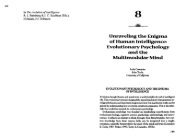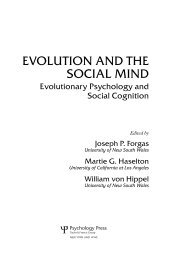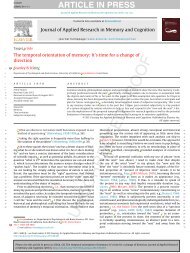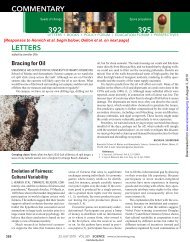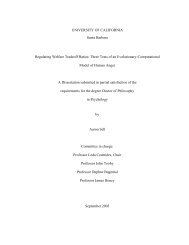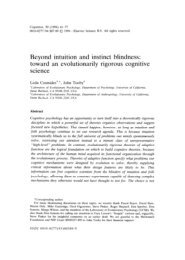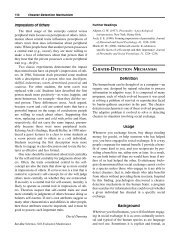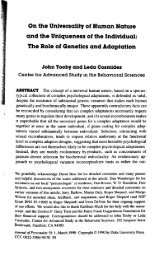Cinderella Effect: The Facts - Center for Evolutionary Psychology
Cinderella Effect: The Facts - Center for Evolutionary Psychology
Cinderella Effect: The Facts - Center for Evolutionary Psychology
You also want an ePaper? Increase the reach of your titles
YUMPU automatically turns print PDFs into web optimized ePapers that Google loves.
<strong>The</strong> <strong>Cinderella</strong> effect - 6<br />
nevertheless found large <strong>Cinderella</strong> effects. Creighton & Noyes (1989) estimated rates of child abuse<br />
by married stepfathers versus mothers’ cohabitees in Great Britain, and actually found the <strong>for</strong>mer to be<br />
significantly higher than the latter, a unique result that is likely to prove exceptional.<br />
<strong>The</strong> most thorough examination of the simultaneous relevance of steprelationship and marital registration<br />
is that conducted by Daly & Wilson (2001) with respect to fatal batterings in Canada. What they found<br />
was that both steprelationship and commonlaw status were strong predictors of homicide risk, and that<br />
neither variable’s influence could be explained away as an artifact of the other’s. In other words,<br />
stepfathers were greatly overrepresented as killers within both registered and de facto unions<br />
considered separately, and de facto fathers were greatly overrepresented within both genetic and<br />
stepfathers considered separately.<br />
Stepparents or stepfathers?<br />
Many of the analyses discussed above have focused on homicides and abuse perpetrated by stepfathers<br />
vs (putative) genetic fathers. Can we infer that excess risk is a feature only of stepfather homes and not<br />
stepmother homes? <strong>The</strong> answer is no. <strong>The</strong> reason why stepmothers are often omitted from the data<br />
presentation is because small children live with stepmothers so infrequently that in all but the largest data<br />
bases, the cases are usually so few that estimates of abuse risk are unreliable, changing markedly as a<br />
result of the addition or subtraction of a single case. Nevertheless, all available evidence indicates that<br />
excess risk from stepmothers (relative to genetic mothers) is roughly on the same order as excess risk<br />
from stepfathers (relative to genetic fathers).<br />
<strong>The</strong> best evidence on this question comes from large child abuse data bases such as those analyzed by<br />
Daly & Wilson (1981) and Creighton & Noyes (1989). Both studies included large numbers of<br />
stepmother cases and provided evidence that rates of physical abuse in stepmother and stepfather<br />
households are roughly similar and far in excess of those in two-genetic-parent households.<br />
Stepmothers are also substantially and significantly more likely to kill young children than genetic<br />
mothers according to the analyses of U.S. data by Weekes-Shackel<strong>for</strong>d & Shackel<strong>for</strong>d (2004), despite<br />
the facts that (1) as with stepfathers, the code “stepmother” was restricted to those in registered<br />
marriages, and (2) the genetic mother cases included neonaticides, a distinct category of homicides that<br />
is sometimes quite numerous. We have already mentioned the identical abuse rates in stepmother and<br />
stepfather households in the Korean study by Kim & Ko (1990). Finally, stepmother households tend<br />
to be even more extremely overrepresented than stepfather households among adolescent runaways<br />
who aver that they are fleeing abusive families.<br />
Mundane (non-abusive) discrimination against stepchildren<br />
It is important to stress that although stepchildren incur elevated risks of abuse and homicide, these dire<br />
outcomes are by no means typical. Many, perhaps most, stepparents make positive contributions to the<br />
well-being of their stepchildren, and most stepparents and stepchildren evaluate their relationships at<br />
least somewhat positively. Nevertheless, steprelationships are difficult, and those who make it their<br />
business to help stepfamilies in distress are unanimous in cautioning that it is a mistake to expect that a



